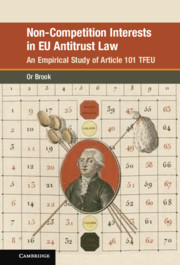| |
Pris: 1729 SEK exkl. moms  |  This book is the first to empirically examine the role of non-competition interests (public policy) in the enforcement of the EU's prohibition on anti-competitive agreements. Based on an original quantitative and qualitative database of over 3,100 cases, this book records all of the public enforcement actions of Article 101 TFEU taken by the Commission, EU Courts, and the national competition authorities and courts of five representative Member States (France, Germany, Hungary, the Netherlands, and the UK). The book not only exposes explicit tools in which non-competition interests played a role, but also sheds light on the “dark matter” of balancing, namely, invisible forms of balancing triggered by the institutional and procedural setup of the competition enforcers. Moreover, it contributes to the empirical-legal study of various other aspects of EU competition law enforcement, such as its objectives, the more economic approach, decentralized enforcement, and the functioning and success of Regulation 1/2003. This book is the first to empirically examine the role of non-competition interests (public policy) in the enforcement of the EU's prohibition on anti-competitive agreements. Based on an original quantitative and qualitative database of over 3,100 cases, this book records all of the public enforcement actions of Article 101 TFEU taken by the Commission, EU Courts, and the national competition authorities and courts of five representative Member States (France, Germany, Hungary, the Netherlands, and the UK). The book not only exposes explicit tools in which non-competition interests played a role, but also sheds light on the “dark matter” of balancing, namely, invisible forms of balancing triggered by the institutional and procedural setup of the competition enforcers. Moreover, it contributes to the empirical-legal study of various other aspects of EU competition law enforcement, such as its objectives, the more economic approach, decentralized enforcement, and the functioning and success of Regulation 1/2003.
- Provides a fresh, empirically-based view on the much-debated topic of the role of non-competition interests (public policy) in the enforcement of Article 101 TFEU
- Utilizes findings gathered from an original quantitative and qualitive database of over 3,100 cases
- Focuses on national enforcement alongside the enforcement at the EU level
Table of Contents
1. Introduction and methodology
2. History of Article 101 TFEU
3. Article 101(3) TFEU – individual exemptions
4. Block exemptions regulations
5. Article 101(1) TFEU
6. National balancing tools
7. Enforcement discretion
8. Conclusion. | | |
|